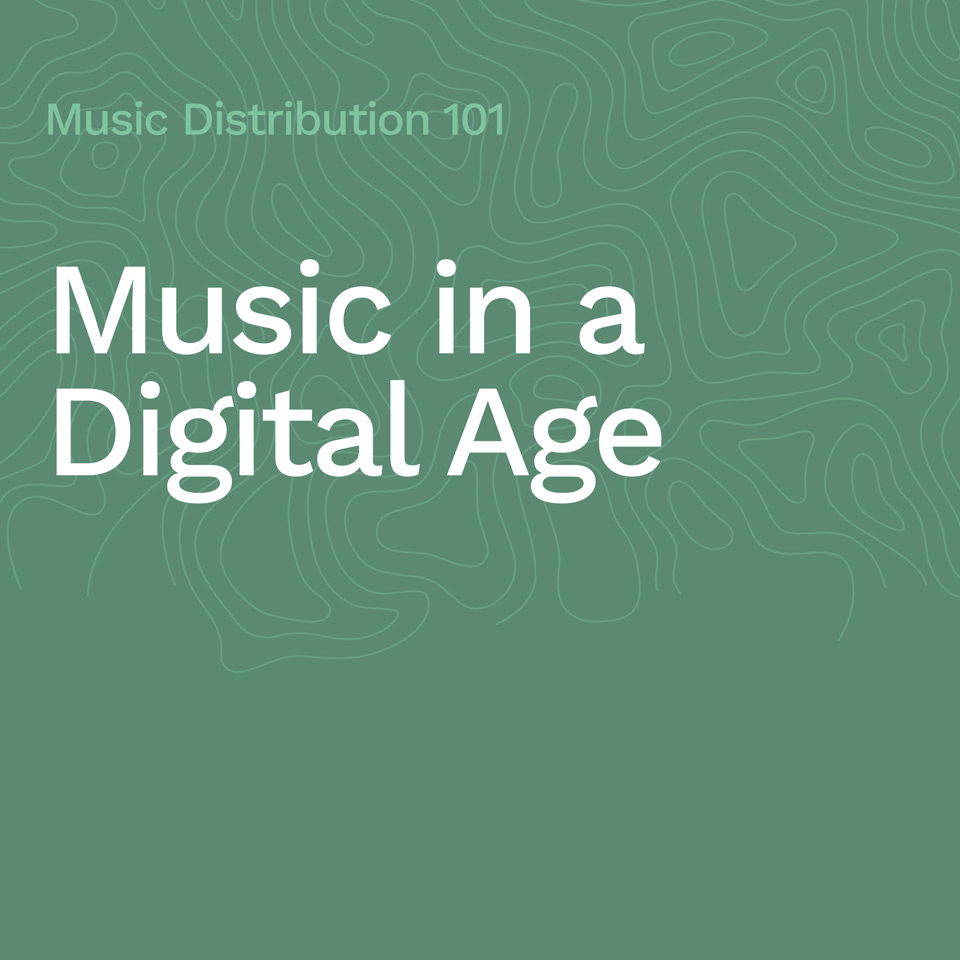Artist Resources
PHOTO CREDIT: DANI BOLTON
Music in a Digital Age

Music in a Digital Age
January 23rd, 2024
Music distribution has rapidly evolved alongside the digital age. Thanks to modern technology, the ability to play and discover music is readily available at our fingertips. Within this physical and digital landscape where exactly do we find a home for our music, and how do we put it there?
This is a brief guide to digital distribution, and how to get your music online and available for current and future fans.
The Digital Music Market
Digital music has grown into a multi-billion-dollar market. With such demand, new music platforms are constantly emerging and there are many different avenues for people to engage with music.
Staying up to date with every single servicing platform would simply overwhelm us. What we can do is break them into categories.
There are three major types of digital music platforms:
- Download – such as iTunes, Bandcamp, Amazon Music, Qobuz
- Streaming – such as Spotify, Apple Music, YouTube Music, Soundcloud
- Broadcast / Online Radio – such as iHeartRadio
While these are considered the more notable platforms in Aotearoa, it’s important to note there are many others. Some territories may have different platform preferences for their music – for example, the largest music platform in China is QQMusic (Tencent) – while some platforms have more of a niche genre focus. It’s important to do some research on what platforms are more popular amongst your kind of music.
Many platforms will also offer a combination of services. For example, Beatport (a DJ/electronic music focused company) provides both download and streaming services on their platform. For the bulk of the above platforms, you will need to use an aggregator to add your music to their services – the exceptions to the aforementioned platforms include Bandcamp, Soundcloud, and iHeartRadio which you can approach directly with varying degrees of complexity.
Choosing an Aggregator
Major labels have their own deals with digital services and act as aggregators for the artists signed to them. For non-major labels and independent artists, you can source your own aggregator.
In Aotearoa, we have local aggregators including DRM (Digital Rights Management) and Precise Digital. There are also many other overseas aggregators such as TuneCore, DistroKid and CD Baby. Regardless of where they are based, most aggregators will upload your music to their scope of platforms, distribute earnings, and provide income statements. Many will also be able to provide analytics across the different platforms, so you can see metrics of your listener base and where across the world your listenership is coming from.
All aggregators will have their own financial model with their own terms and conditions. Like all business relationships, it is best to fully read and understand the contract before signing, what they are offering and what they are binding you to.
There are two types of aggregators:
- Percentage based aggregators – These aggregators take a cut/percentage of the income that you make from your streams/downloads. They may not charge a fee to start with but will likely subtract a percentage of your income prior to paying you. They may also charge you additional fees for processing with this being subtracted from your payments.
- Flat fee aggregators – These aggregators do not take a cut from your sales but instead charge you a flat fee annually. In some cases, you are free to upload as many releases you wish or there is a set limit which you can then upgrade.
It is important to consider the following when choosing an aggregator:
- What stores do you want to be in? Are the major platforms like Apple Music, Spotify, YouTube Music, Deezer and Tidal enough, or are there specific regions or genre-focused services you need to be in? It’s important to do your research on your aggregator to see if their store scope covers the platforms and territories you’d like to see your music shared to.
- What kind or reporting do you require and does the aggregator provide it? Analytics can help you to understand your fans better, and where you can likely engage more fans. With comprehensive analytics, you can look to target your audiences more effectively.
- Are you signing a roll-over or multi-year aggregator contract? What are the conditions if you choose to terminate your contract early? It is important to consider opportunities (such as exclusive licensing) that may arise in the future which a multi-year contract could prohibit you from uplifting.
- What territory or territories are you focusing on? If you are primarily focusing on Aotearoa, it would be a good idea to sign with a local company for real-time help and support with local industry connections. If there are opportunities that arise that warrant exclusive territory agreements, it’s important your aggregator’s terms and scope allows for restricted delivery.
Ultimately, it’s important to do some research, “shop around” and map out what you’d like to achieve with the tools and services your aggregator can provide. One of these services could be their ability to do an editorial
